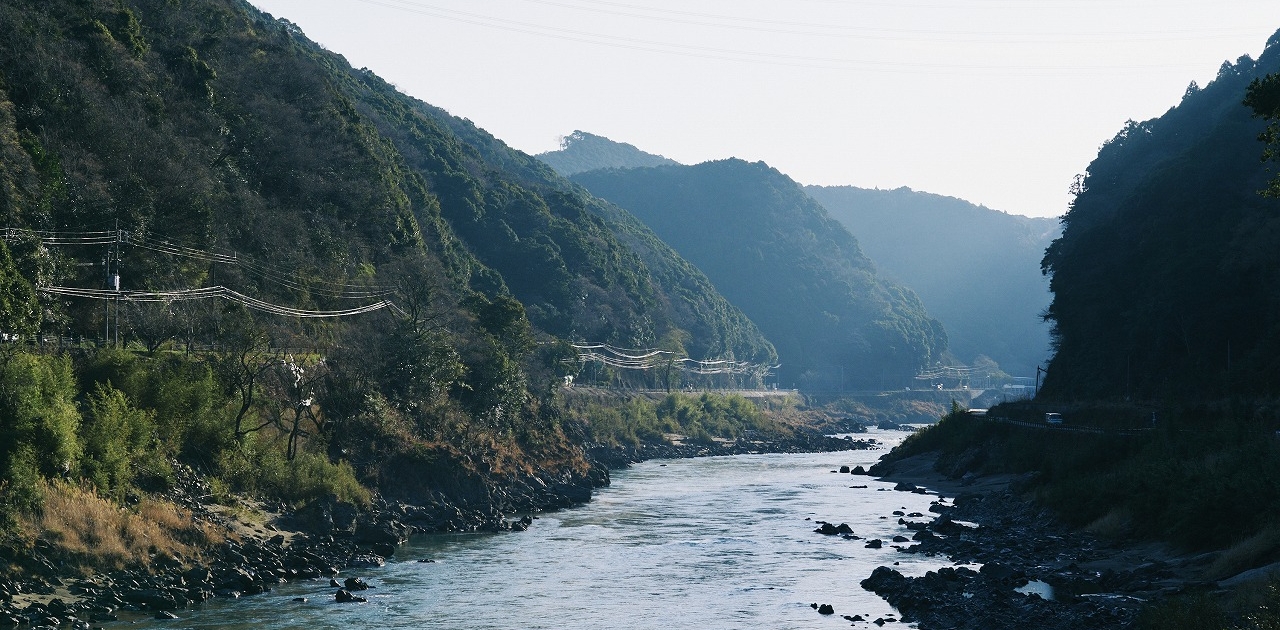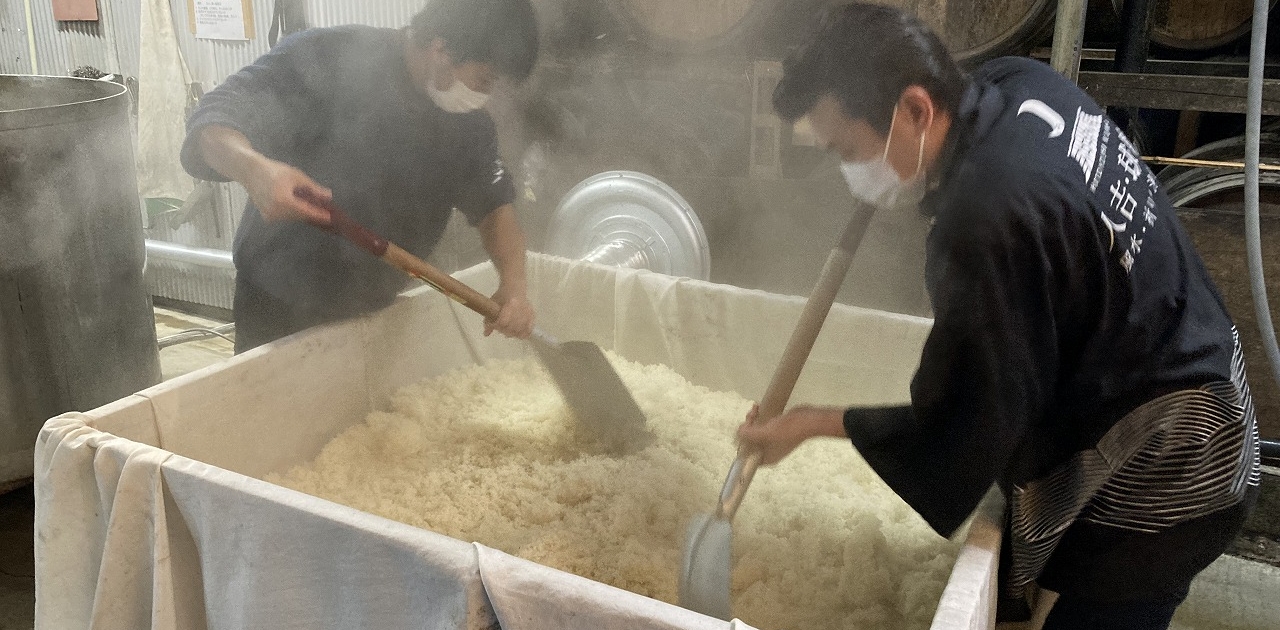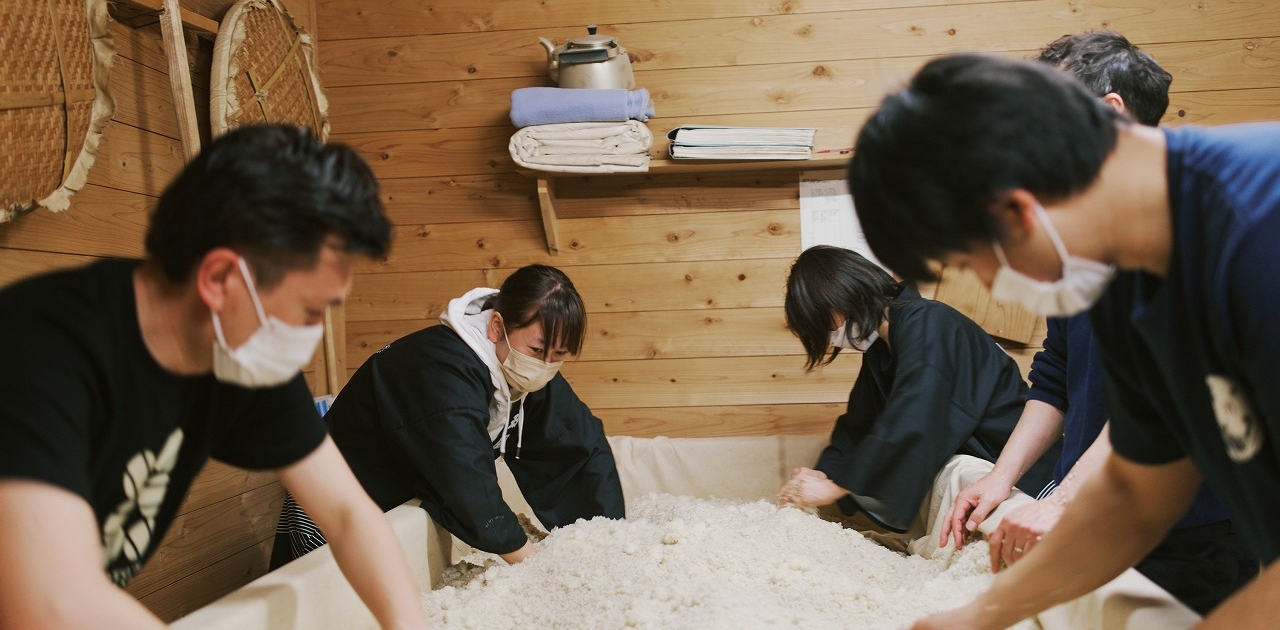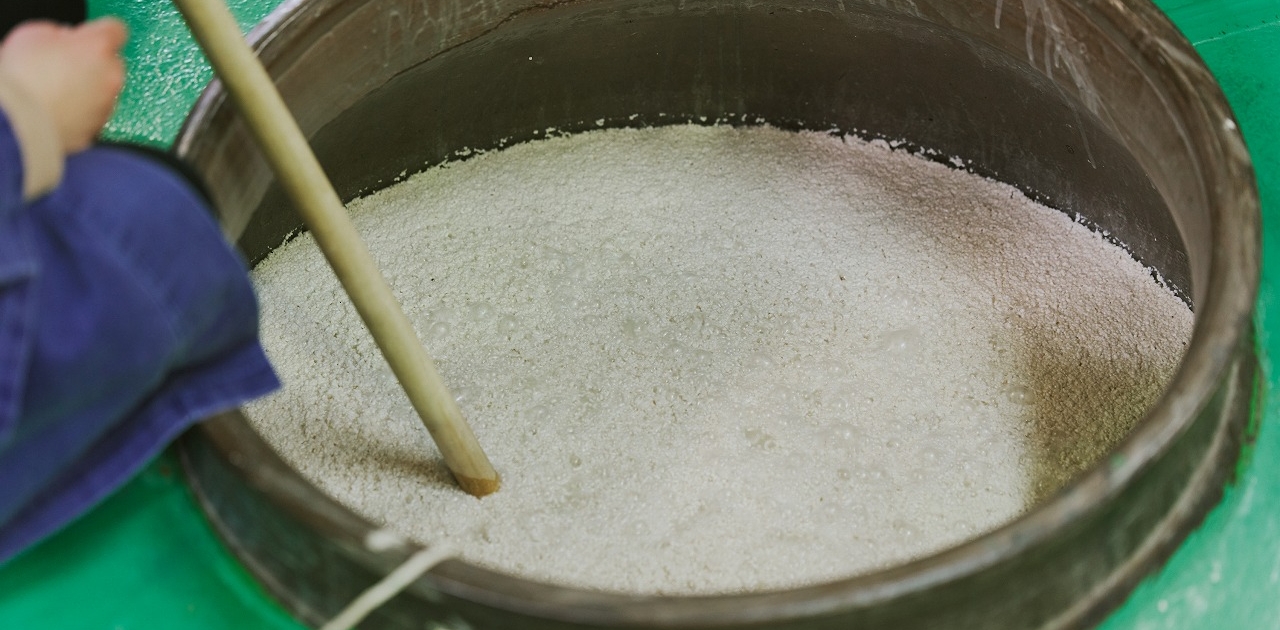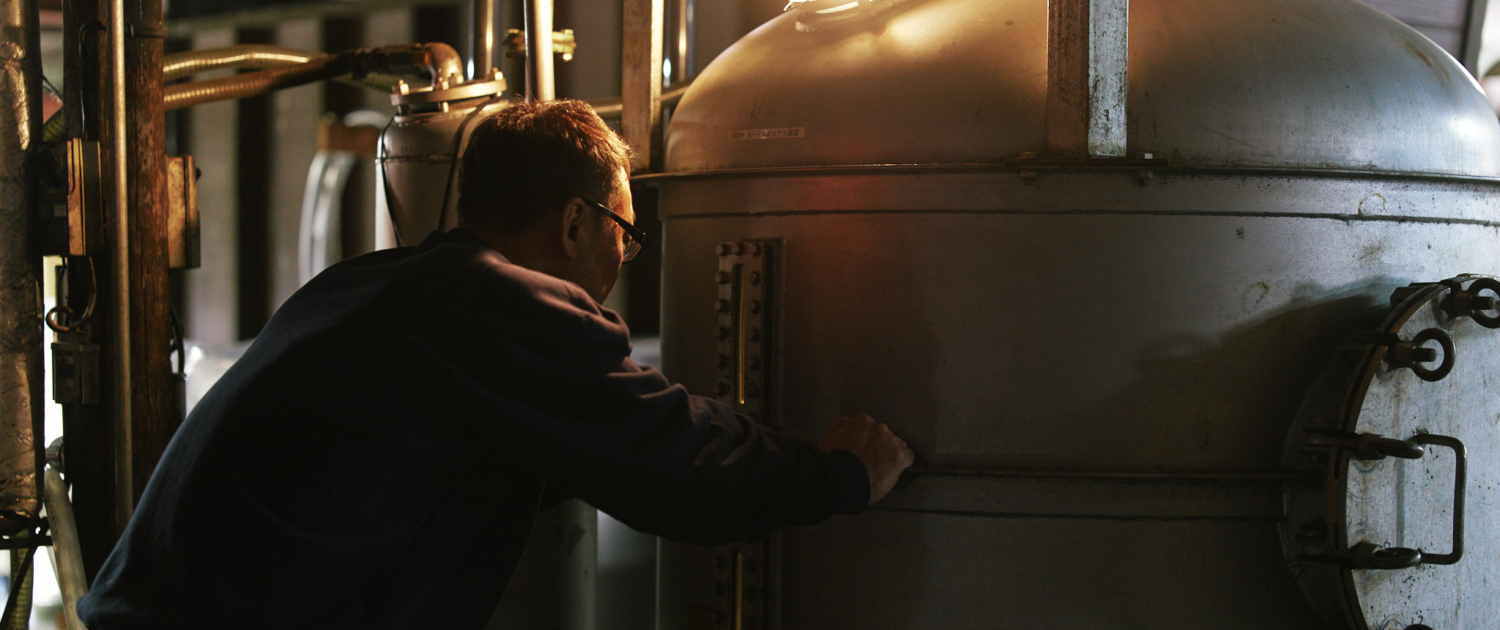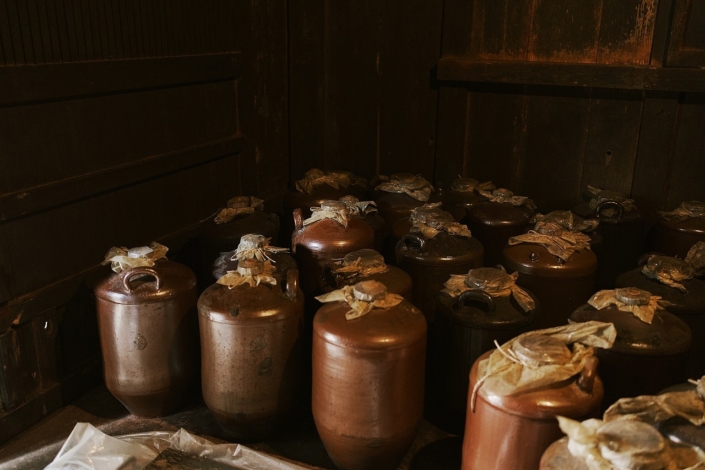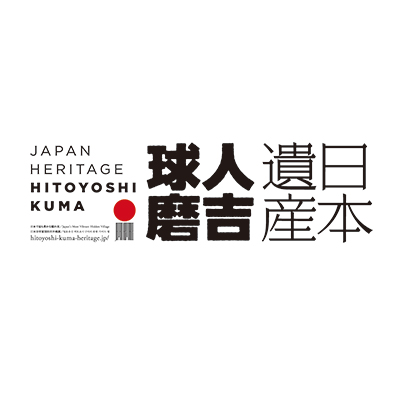KUMA SHOCHU
Local brand nartured over 500 years
Hitoyoshi Kuma,the southernmost area of Kumamoto
Prefecture,is located deep in a valley which is surrounded by the Kyushu mountains. Pure, clean water flows from the beautiful mountains here to create the Kuma River, one of the three fastest flowing rivers in Japan.
The harsh climate and terrain of this valley, which experiences drastic changes in temperature throughout the year, has resulted in fertile soil, allowing Hitoyoshi Kuma to become Kumamoto’s leading areafor rice farming.
The rice produced in Japan is the mainingredients of Kuma Shochu, a premium honkaku(“genuineshochu.
Kuma Shochu has become an iconic shochu brand in Japan,as only one of five approved brands with Geographical Indication (GI)
The Making of Kuma Shochu
(1) Steaming the Rice
Kuma Shochu is made from rice. The rice is washed, soaked in water, and then steamed.
(2) Making Koji (Rice Malt)
Koji is made by adding koji mold to steamed rice.
After steaming and cooling the rice, koji mold is sprinkled on it. The rice is kept at around 35°C for about 40 hours so the mold can grow.
This process usually takes place in a special warm room called a Koji Muro. If done by hand, it’s called manual koji-making.
(3) First Fermentation (Primary Mash)
This is the step where yeast is grown.
Yeast that makes alcohol is grown in large amounts while preventing unwanted bacteria, to prepare for producing more alcohol.
Water, cultivated yeast and koji are mixed in a container such as a clay jar. This stage is called the first fermentation, and the mixture is called the primary mash (Ichiji Moromi). The yeast feeds on nutrients from the koji and continues to multiply during alcohol fermentation.
(4) Second Fermentation (Main Fermentation)
【アルコールを本格的につくる工程 主発酵】
In this stage, more steamed rice and water are added to the primary mash.
This creates the right environment for the yeast to produce more alcohol.
This process is called second fermentation, and the mixture becomes the secondary mash (Niji Moromi).
(5) Distillation
After fermentation, the secondary mash is heated in a still.
Alcohol evaporates first, and when the vapor is cooled, it turns back into liquid.
This liquid is the raw shochu spirit.
(6) Storage and Aging
The distilled shochu is stored in sealed containers for aging.
Over time, its flavor and aroma deepen, becoming rich and mellow Kuma Shochu.
It can be stored in four ways: in tanks, clay jars, wooden barrels, or bottles.
[English] Kuma Shochu PV

